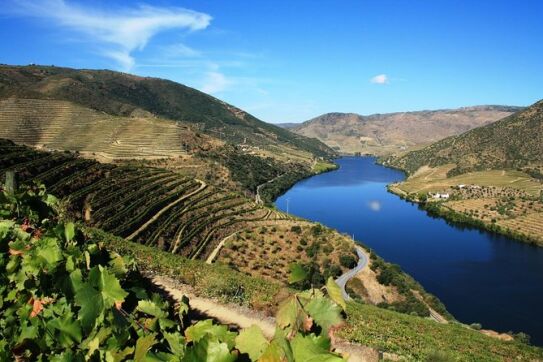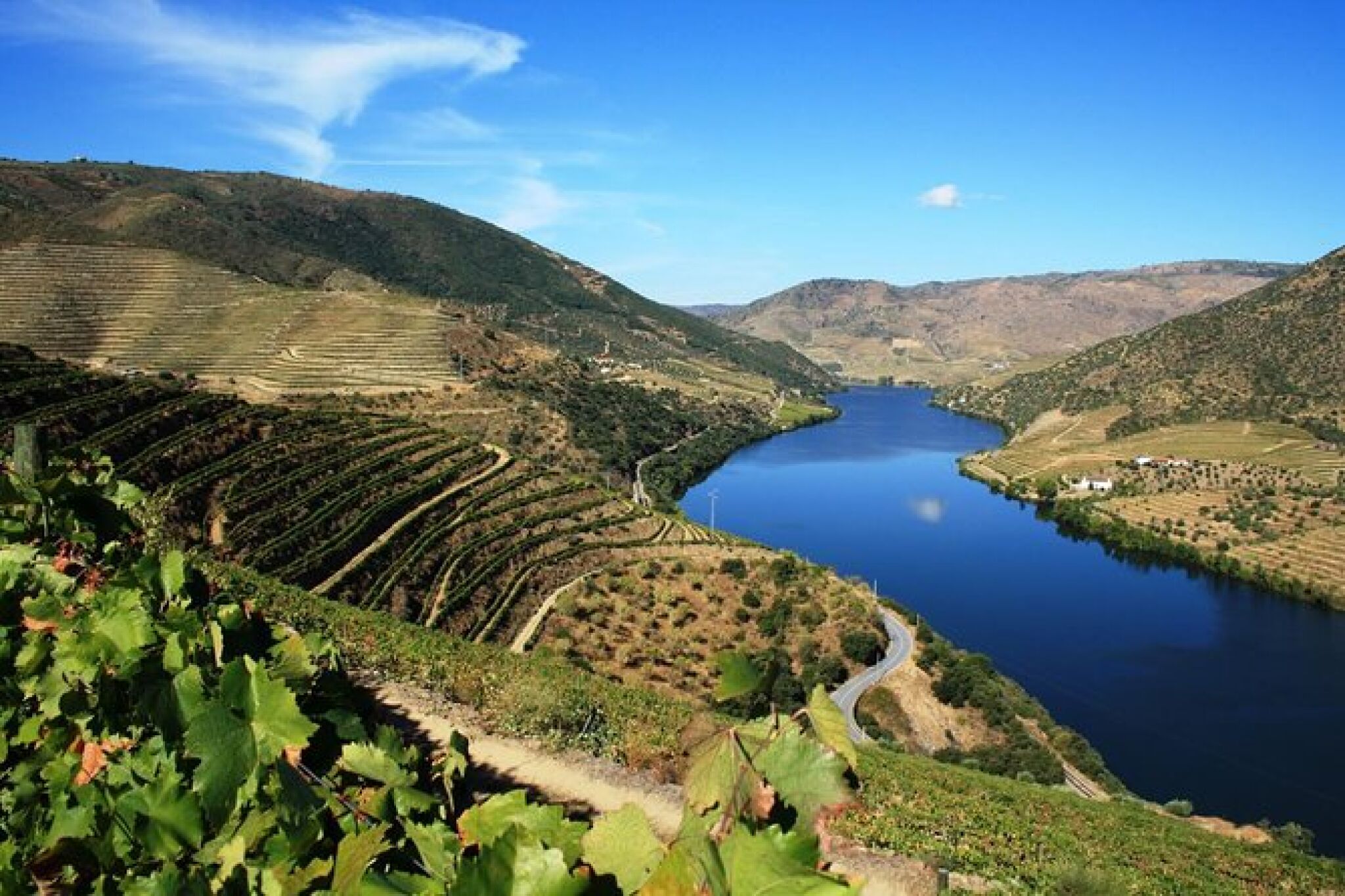by Nick Adams MW
As we approach Christmas an array of food and drink items come to mind – amongst them Port. Not only a traditional drink at this time of year, but also a lovely gift item and, of course, the ideal partner to the Christmas cheeseboard. But there is more to Port than meets the eye and it should be viewed as a drink with such a mixture of styles that it can also be enjoyed in many months outside of December.
And I will recommend some top examples from the Peter Graham Portfolio – who have been a long-standing supporter of Graham’s – one of Port’s greatest Houses.
What is Port?
Port is made from grapes grown in the inland Douro Valley, a hot area with steep, terraced, valleys and hard schist soils which are very poor in nutrients. In this arid environment local indigenous port grapes – led by Touriga Nacional – but also including Tinta Roriz (Tempranillo), Tinta Francesa, Tinta Barocca, and Tinto Cão combine to make one of the world’s most hedonistic red wines. A small amount of White Port is also made – mainly from Malvasia, Voisinho, and Gouveio grapes.
The Douro is split into 3 sub regions – the Baixo Corgo, Cima Corgo, and Douro Superior. The latter two are broadly accepted to be the finest with the highest proportion of top graded vineyard farms – called Quintas. These are rated by the authorities as A to F, with A clearly being the finest – and where grapes destined for both Vintage and Reserve Aged Tawny Ports are usually sourced. The Douro was formally established as an appellation in 1756 – which interestingly makes it the third oldest defined wine region after Chianti (1716) and Tokaj (1730).
The twist is that most Ports are then shipped to Producer Lodges in Oporto on the cool Atlantic coast where they are stored and aged in both bottle and cask.
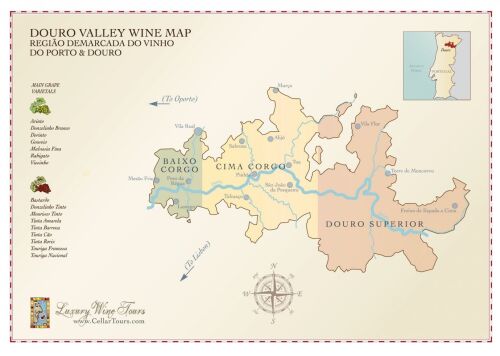
Brief History & Process
Port had already become popular in England following The Methuen Treaty of 1703 when, as result of the then war with France, merchants were permitted to import “Port and Portuguese Wines” at lower duty rates – and the then drinkers fell in love with the richer and sweeter styles of wine being imported. This was partly assisted by the fact the wines were fortified to help preserve them on their long journeys to market, so the new style took root. This also indirectly led to significant direct investment in the region and vineyards by British merchants and why, to this day, most of the main producers have anglicised names – Graham, Taylor, Dow, Warre, Sandeman, Cockburn, Croft, Smith Woodhouse for example.
All Port production is strictly regulated and overseen by the authorities Instituto do Vinho do Porto.
How the process of making port came about is unclear – maybe a degree of trial and error – but the method involves the addition of very high strength grape brandy spirit (called aquardente) to the fermenting juice roughly around when it is halfway to producing what would be a full bodied dry red wine. The result is a full bodied, tannic, and dark coloured red wine which is both fortified (sometimes to as much as 21% abv) and, of course, is sweet - as the addition of the strong spirit immediately kills off the fermenting yeast before they have fed on all the natural grape sugars.
Traditionally, the grapes were foot trodden – in open lagars - and some houses including Graham’s and Taylor’s still use this process in some of their finer cuvées, but most ports these days are made in sealed or open fermenting vessels mainly of stainless steel or concrete.
Once the fermentation and fortification processes are complete most ports are transferred into cask or vats (nearly always old oak) and then aged in producer cellars (called Lodges) most of which are in Oporto. From this point the future style of each port will be crafted.
(Image right: The traditional method of foot treading to gently release the juice and colour pigments, and warm the juice prior to fermentation)
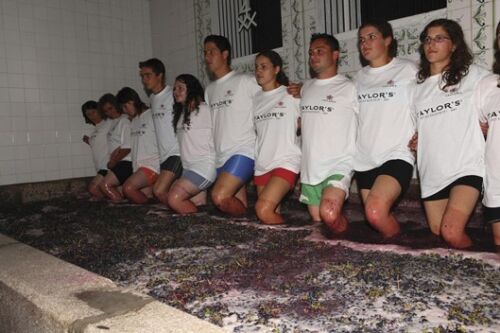
Styles of Port
The standard style of drinking Port is called Ruby (after its young colour) – usually made from lesser graded vineyards and a blend of recent years. These are accessible young, attractive, and straightforward wines. A superior style is Late Bottled Vintage (LBV), which as the name implies is made from a single harvest year, from superior vineyards, and in then aged by law for between 4-6 years in cask before being bottled either filtered, or unfiltered (called “traditional” and requiring decanting off its sediment). These make for very satisfying and more structured ports.
By contrast some top ports are put away in larger old casks to age oxidatively over many years. These refined “Reserve” Tawny Ports (named so after their evolved colour) are the most delicate and more-ish of all ports – usually released in 10, 20, 30,40, year old cycles. These are the one red port style which benefits from being served chilled down – or at least “cool” – and can be enjoyed in the summer months when other port styles may be thought to be on the “heavy” side.
Vintage Ports command the greatest level of kudos and imagery and are only made in exceptional vintage years and from top grade (usually A) vineyards. By law these wines must be bottled before their second birthday – and always unfiltered and unfined – which is why over time a thick sediment falls out of solution as solid, and therefore must be decanted before being drunk. Because all the aging is done in bottle (and away from oxygen) the evolution of both secondary aromas and flavours takes considerable time – most vintages require at least 20 years in bottle to resolve.
Vintage ports are often a blend of wines from a mix of top Quintas owned by the house by they also make (sometimes in less exulted years) Single Quinta wines but to the same exacting method and standard. They often too mature slightly more quickly than vintage ports made in stellar years, so can be accessible from 10 years of age for example.
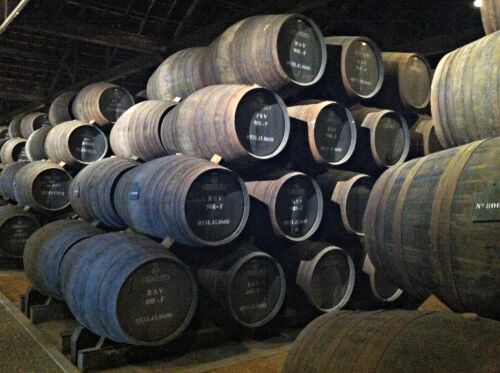
Graham’s Ports Selection
There is no formal, official classification of Port Houses but it is broadly accepted in the trade that Graham’s is one of the four greatest estates – along with Fonseca, Quinta do Noval, and Taylor’s.
As said, Peter Graham has a long association with the House of Graham and I would like to highlight a mix of styles for various occasions and different times of the year.
Grahams was founded in 1820 by brothers William & John Graham. They quickly established a fine reputation leading to the building of the Lodge in Gaia Oporto and the acquisition of Quinta dos Malvedos in 1890. In 1892 Andrew Symington joined the business and a long association grew between the families with Andrew’s grandsons acquiring the Graham estate in 1970.
Image Left: Graham’s magnificent Quintas dos Malvedos – one the Douro’s greatest vineyards
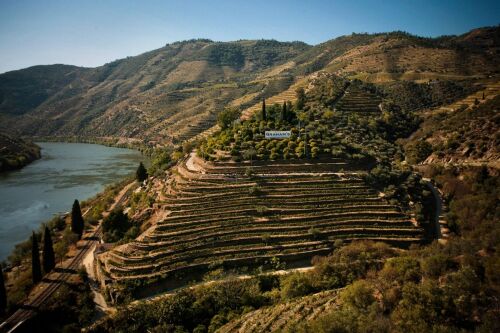
My Highlights
1. Blend No 5 White Port
This is a great aperitif drink – white Port, mint, crushed ice, lemon (or orange, or grapefruit) and tonic – if you have not tried this then please give it a go – it’s what they drink in the bars in Oporto.
2. 10 year old Tawny Port at its most refined and delicate – wonderful notes of rum’n’raisin, vanilla, nutty and touches of caramel and dried fruits – very savoury and more-ish. Serve cool and enjoy on its own or with cheese, will partner vanilla ice cream well too. Once opened keep in the fridge and enjoy over a 2-3 week period.
3. Quinta dos Malvedos 2012
Acquired in 1890 and located between Cima Corgo and Douro Superior regions, Malvedos is always the foundation of Graham’s Vintage Ports. Bottled here on its own and approaching 10 years now in bottle it is a rich, structured Port with floral notes and flavours of cherry liqueur, liquorice, and soft spices.
2012 was the second driest year since 1967 and yields were very low – this is a punchy Malvedos. Please decant off its lees (if you do this through a muslin sheet it’s easy) and enjoy over the next week. Perfect after dinner drink or of course classically with all cheeses.

